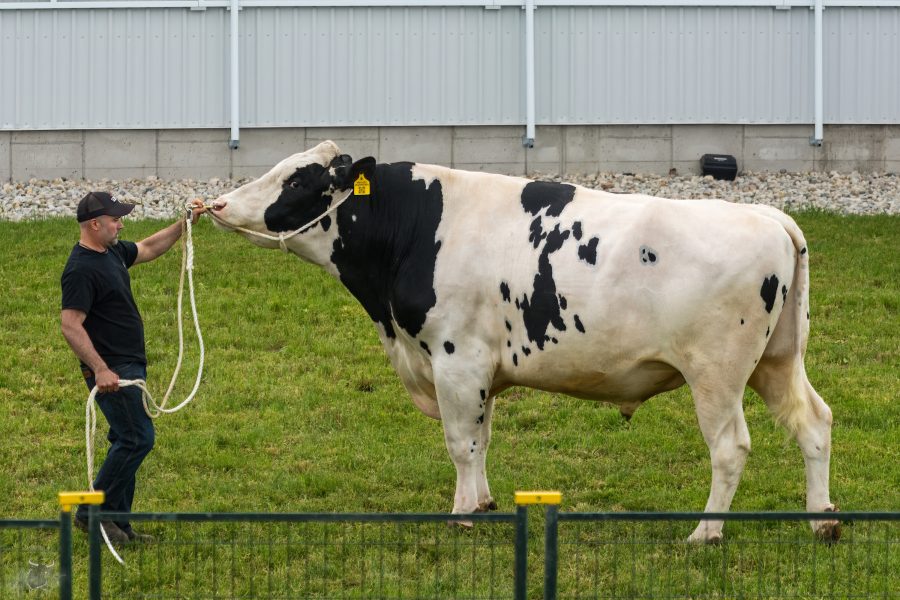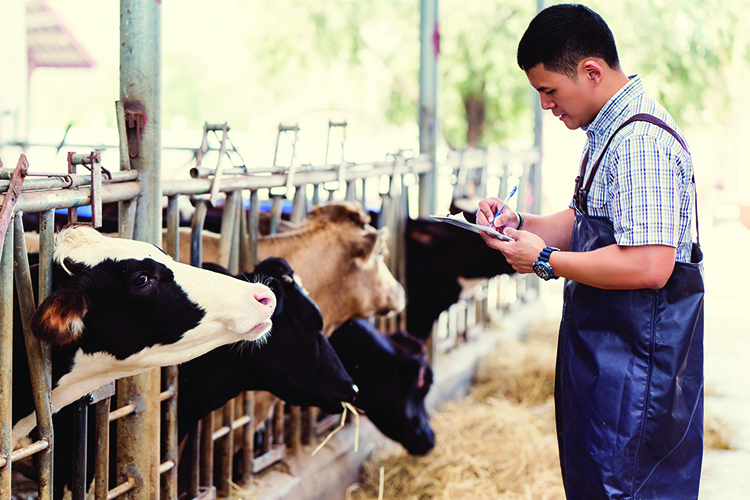Celebrate Dairy Month by honoring the dedication of dairy farmers. Discover why their hard work deserves recognition and how you can support them. Ready to learn more?

Every June, communities nationwide unite to celebrate Dairy Month, a tradition rooted in 1937’s National Milk Month. This occasion started to boost milk consumption during peak production but has grown into a month-long celebration of the dairy industry‘s rich heritage and vital contributions. Dairy Month is our chance to honor the hard work, dedication, and resilience of dairy farmers who play an essential role in our lives.
Dairy Month is more than recognition; it’s a time to reflect on the multifaceted impact of dairy farming on our economy, nutrition, and culture. Acknowledging the farmers’ commitment, we highlight the importance of sustainable practices that benefit our communities and environment.
Join us as we explain why we should enthusiastically celebrate Dairy Month. We will spotlight the crucial role of dairy farmers and how their efforts enrich our lives. By examining their challenges and achievements, we aim to deepen our appreciation for these unsung heroes of agriculture.
Anchoring Economic Stability and Nutritional Well-Being: The Undeniable Importance of Dairy Farming
As we embark on Dairy Month, it is crucial to understand the profound impact of dairy farming on our economy, our health, and our communities. By delving into the data, we not only honor the tireless work of dairy farmers but also underscore the importance of their industry. Let’s begin by examining some key statistics that highlight the significance of dairy farming in the United States.
| Data Point | Value |
|---|---|
| Annual Milk Production (billion pounds) | 223.1 |
| Number of Dairy Farms | 31,657 |
| Average Milk Production per Cow (pounds/year) | 23,149 |
| Total Economic Impact ($ billion) | 628 |
| Jobs Supported by Dairy Industry | 3,993,000 |
In an era of economic instability and health crises, dairy farming remains a pillar of financial stability and nutritional well-being. The agricultural sector, crucial to rural communities and food security, finds a significant champion in dairy farming. This industry supports local economies through robust job creation—over 900,000 direct and more than 2 million total jobs—and integrates deeply into communities through various outreach initiatives. Its economic impact, nearing $200 billion annually, highlights the indispensability of dairy farming in driving national prosperity and sustaining countless families.
On the nutritional front, dairy products are essential for a balanced diet. For instance, a glass of milk provides about 30% of the daily recommended intake of calcium, which is crucial for bone health. Yogurt, another dairy product, is a good source of probiotics, which promote a healthy gut. These nutrients are crucial for bone health, muscle function, and overall bodily growth. Dairy is a powerful countermeasure in a society plagued by dietary deficiencies and lifestyle diseases, enhancing public health and reinforcing its status as a health imperative.
Celebrating Dairy Month transcends mere festivity; it is a call to honor the contributions of dairy farming. It underscores the industry’s economic and health benefits, advocating for continued support and appreciation of the dairy farmers who enrich our lives and communities.
Dairy farmers, foundational pillars within their communities, face an intricate web of daily challenges that test their resilience and dedication. Economic pressures are a significant hurdle, driven by fluctuating milk prices, rising operational costs, and international trade dynamics that can abruptly shift market demands. These financial strains are further compounded by the necessity for substantial investments in technology and infrastructure to maintain competitive and sustainable operations. Moreover, climate change poses a significant threat to milk production, with extreme weather events and changing seasons affecting the health and productivity of dairy cows.
Overcoming Challenges: Labor Shortages and Environmental Responsibilities in Dairy Farming
The sector grapples with labor shortages, a critical issue threatening farm efficiency. Skilled labor is increasingly scarce, and the demanding nature makes it hard to attract and retain workers. This shortage escalates labor costs and strains farm owners and their families, who often have to fill in the gaps.
Environmental concerns add complexity. Dairy farmers must responsibly manage land and water resources to balance productivity with sustainability. Stringent regulations target reducing carbon footprints, managing manure, and mitigating farming impacts on ecosystems. Innovations like methane digesters and precision agriculture are solutions but require significant investments and expertise.
These challenges underscore the unwavering dedication and resilience required in dairy farming. Farmers continually adapt, investing in operations and skills to stay ahead of evolving standards and expectations. Their commitment to feeding nations and supporting economies is a testament to their indomitable spirit, underscoring the importance of recognizing their contributions, especially during Dairy Month.
Weaving Tradition and Community: The Deep Cultural Fabric of Dairy Farming in America
Dairy farming‘s cultural significance extends beyond economics and is deeply ingrained in various regions’ social fabric. Nationwide, this practice is celebrated as an agricultural pursuit and a heritage cornerstone. In the Midwest, events like Wisconsin’s Dairy Days highlight communal pride and the historical roots of dairy farming, drawing in farmers, families, and tourists, fostering a sense of shared heritage and pride.
In New Mexico, dairy farming is the top cash crop, tightly woven into the region’s cultural identity and economy. The production of local dairy products like artisanal cheeses is not just a business but a way of preserving our traditions and promoting self-reliance. Farmers markets abound with these products, underscoring sustainability and our commitment to our heritage.
The Northeast, especially Vermont, boasts a pastoral tradition with family-owned dairy farms maintaining generational stewardship. These farms often hold educational tours and farm-to-table dinners, drawing the public into the dairy farming lifestyle and preserving community bonds.
Dairy farmers frequently act as community pillars, engaging in volunteer work and local development projects year-round. This community spirit enhances the socio-economic landscape, embedding dairy farming into the essence of local customs.
By celebrating Dairy Month, we honor these diverse contributions and ensure that dairy farming’s legacy and cultural significance endure.
Consuming with Conscience: The Power of Supporting Local Dairy Farmers
Supporting dairy farmers through conscious consumer choices is more than a preference; it’s a responsibility. By buying local dairy products, consumers directly uplift their communities. Local purchases ensure fresher products and fewer food miles while sustaining local agriculture and livelihoods.
Visits to dairy farms reveal the dedication and work ethic of farmers. Many farms provide tours, tastings, and educational events, especially during Dairy Month, offering a profound educational experience about our food’s origins.
Participating in Dairy Month events like farm tours, meet-and-greets, and product samplings bridges the gap between consumers and farmers. Such events enhance appreciation for the industry and inform consumers about its challenges and contributions.
Informed consumer choices wield significant power. By prioritizing local and sustainable options, consumers can directly bolster local economies, sustain jobs, and preserve traditions. Celebrating Dairy Month with mindful consumption is not just a celebration but a call to action that honors the resilience and value of the dairy farming industry, empowering consumers to make a difference in their communities.
The Bottom Line
As we reflect on the dairy farming industry, its profound economic impact, resilience, cultural significance, and the imperative to support local farmers become clear. The industry’s nearly $200 billion contribution to the economy, over 900,000 direct jobs, and more than 2 million total jobs highlight its role as a pillar of financial stability, representing the past and future of our food systems and traditions.
Celebrating Dairy Month honors the multifaceted benefits of dairy farming. It recognizes the tireless dedication of farmers who feed our nation, sustain economic vibrancy, and uphold rural heritage.
To the dairy farmers, your unwavering commitment does not go unnoticed. Your resilience and passion nourish our bodies, fortify our communities, and enrich our culture. We extend our deepest gratitude for your relentless dedication and enduring contributions.
Key Takeaways:
- Financial Stability: Dairy farming bolsters local and national economies by providing consistent employment and contributing to economic growth.
- Nutritional Well-Being: Dairy products are crucial for a balanced diet, offering essential nutrients like calcium and probiotics for health maintenance.
- Cultural Heritage: The practice of dairy farming is deeply ingrained in American culture, reflecting values of tradition and community engagement.
- Labor and Environmental Challenges: The industry faces significant obstacles such as labor shortages and environmental responsibilities, which require innovative solutions and public support.
- Consumer Impact: Supporting local dairy farmers through informed purchasing decisions positively influences the economy and community well-being.

























